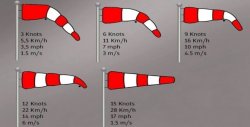What are the flight planning implications, if any, during long periods of poor weather at reasonably isolated airfields?
Declared isolation airports (such as Tahiti) have specific holding fuel requirements, above what would normally be required.
For example while DRW is technically open, all five Australian carriers suspended flights around 3pm today until Sunday due to TC Marcus. Given that SYD/BNE/MEL-DPS all typically have DRW as their alternate and those 738’s are operating near the limit of their range for those sectors, will it make a difference?
For aircraft with ETOPS of 120 or more I guess, CNS, ASP, BME and even ISA all come into play, but that’s no good without the necessary fuel.
I would be extremely surprised if Darwin is ever considered as an alternate for Bali. It's in the order of 800 nm away.
Firstly, many, and probably most, flights DO NOT have any alternate to destination. That means that on arrival they do not necessary have the fuel to go anywhere else. In the extreme case, as long as you finished the landing roll, with an amount of fuel equal to 30 minutes of holding, TO DRY TANKS, then you'd be legal.
During the flight, a twin will need to be able to go somewhere, flying at whatever speed has been chosen for the ETOPS calculations, within the time limit for that type. It will be calculated engine out, and at a ground speed of around 400 knots. If you were flying past Darwin, and it was not suitable, places like Mt Isa, RAAF Tindal, Derby, Broome, Learmonth, would all enter consideration.
At the destination end, Surabaya, Banjarmasin, Kupang, and probably many other Indonesian runways could be considered.















